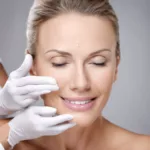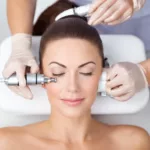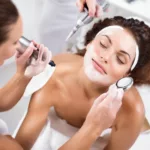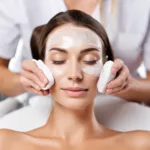6 December 2023
Discover the benefits, types, and considerations of microdermabrasion for achieving a radiant complexion
Microdermabrasion has become a popular skincare procedure that offers a range of benefits, from improving overall complexion to reducing signs of aging and treating acne scars. In this comprehensive guide, we will explore the different types of microdermabrasion, who can benefit from this procedure, what to expect during and after a session, and how to properly care for your skin post-treatment. Whether you’re considering microdermabrasion for the first time or looking to enhance your skincare routine, this article will provide you with all the information you need to make an informed decision.
Benefits of Microdermabrasion
Microdermabrasion works by gently removing the top layer of skin, stimulating the production of new cells and boosting collagen. The benefits of this procedure include:
– Improving overall complexion
– Reducing signs of aging and improving skin texture and firmness
– Treating acne scars
– Reducing the appearance of large pores
– Clearing clogged pores
– Evening out discolored or hyper-pigmented skin
Types of Microdermabrasion
There are two main types of microdermabrasion procedures: crystal microdermabrasion and diamond microdermabrasion. Both methods effectively exfoliate the skin, but they differ in their approach.
Crystal microdermabrasion involves the use of microfine crystals that are shot onto the skin and then vacuumed back up, providing a high-powered scrub. On the other hand, diamond microdermabrasion utilizes a diamond-tipped wand to exfoliate the skin without the need for crystals.
Who Is Microdermabrasion Good For?
Microdermabrasion is suitable for most individuals in good health, particularly those with specific skin concerns or goals. It can be beneficial for individuals with sun-damaged skin, acne scars, large or clogged pores, lines and wrinkles, and an uneven complexion. However, there are certain conditions that may make someone ineligible for microdermabrasion, such as an active cold sore outbreak, moderate to severe acne, an open wound or skin irritation, a rash, rosacea, a suspicious mole, or a sunburn. Additionally, individuals who have used the acne medication isotretinoin in the past six months should avoid microdermabrasion.
How Long Does Microdermabrasion Take?
A typical microdermabrasion session lasts between 15 to 30 minutes. Before the procedure, your technician will cleanse your face and prepare your skin. After the treatment, your skin will be cleansed once again to remove any stray crystals, and moisturizer and sunscreen will be applied. In some cases, microdermabrasion may be included as part of a full facial treatment, which can take approximately 60 to 90 minutes.
How Many Sessions Are Needed?
The number of microdermabrasion sessions required depends on your skin goals. While a single session can leave your skin looking brighter and feeling softer, a series of treatments is often necessary to achieve more significant results. The frequency and number of sessions will be determined by your technician, but typically, six to ten treatments spaced a week to 14 days apart are recommended.
Cost of Microdermabrasion
The cost of microdermabrasion can vary depending on your location and the establishment you visit. Prices can range from $75 to upwards of $300 per session. Factors such as the inclusion of additional treatments or the reputation of the facility may influence the cost. While there are at-home microdermabrasion kits available, professional treatments by a dermatologist or esthetician generally offer better results.
Preparing for Microdermabrasion
To prepare for a microdermabrasion session, it is recommended to avoid aspirin and aspirin-based medications, waxing the treatment area, sun exposure to prevent sunburn, exfoliating products, Retin-A, and glycolic acid. It is also advisable to arrive at your appointment with a clean face and no makeup. Your technician will provide specific instructions based on your individual needs.
Side Effects and Risks
When performed by a skincare professional, microdermabrasion is generally considered safe. However, if not done properly, it can potentially cause scarring. Temporary side effects may include bruising, dry or flaking skin, increased sun sensitivity, mild abrasions, and the recurrence of cold sores. It is important to communicate any discomfort or concerns with your technician during the procedure.
Conclusion: Microdermabrasion is a popular skincare procedure that offers numerous benefits for achieving a radiant complexion. By understanding the different types of microdermabrasion, who can benefit from this procedure, what to expect during and after a session, and how to properly care for your skin, you can make an informed decision about incorporating microdermabrasion into your skincare routine. Consult with a skincare professional to determine if microdermabrasion is the right choice for you and to develop a personalized treatment plan. With the proper care and maintenance, you can enjoy the long-lasting results of microdermabrasion and achieve healthier, more vibrant skin.



